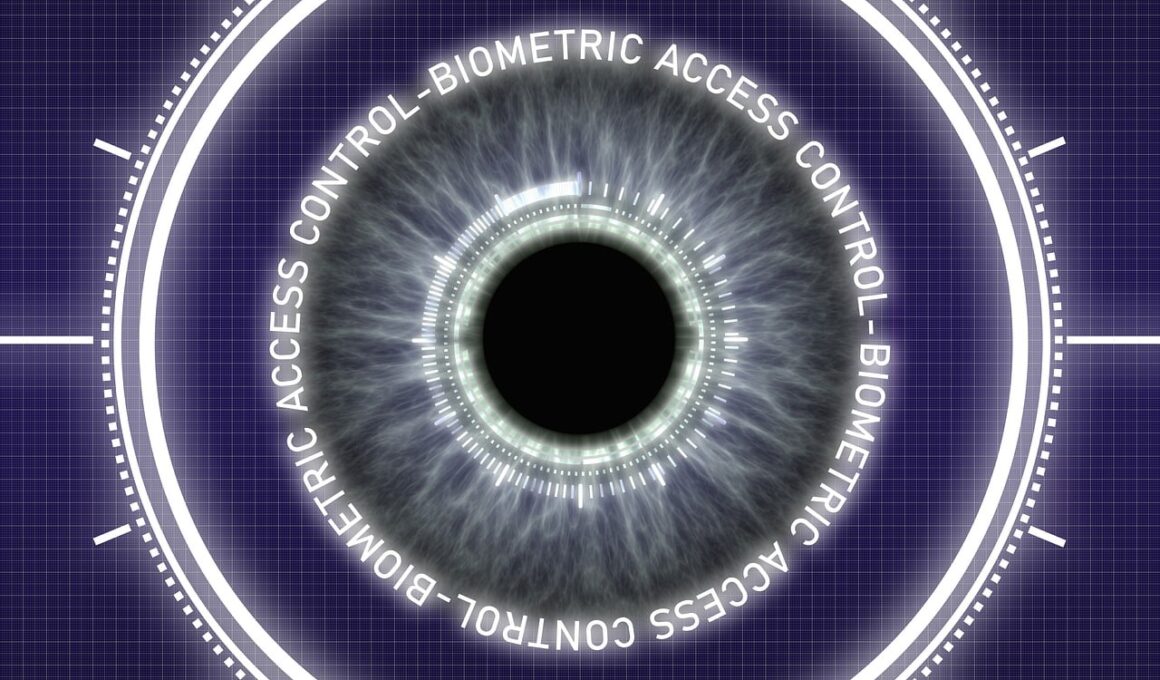Multi-Factor Authentication for Payment Processing Systems
In today’s digital landscape, multi-factor authentication (MFA) has emerged as a critical security measure for payment processing systems in the finance sector. MFA enhances the security protocols utilized within digital transactions, significantly mitigating risks associated with unauthorized access and fraud. Traditional security methods, which often relied solely on passwords, have proven insufficient against sophisticated cyber threats. With the integration of MFA, payment systems require users to verify their identity using multiple forms of authentication. These might include something they know (like a password), something they have (such as a smartphone app that generates codes), or something they are (biometric data). The layered approach provided by MFA not only fortifies user verification but also builds trust in the financial ecosystem. Organizations implementing strong MFA protocols can dramatically reduce incident rates of fraud. As a result, financial institutions are investing heavily in adopting these advanced authentication methods to protect sensitive user data. This article explores the mechanisms behind MFA and its implications for secure payment processing systems.
MFA is particularly essential in the realm of payment processing due to the nature of financial transactions. Every transaction exchange involves sensitive personal information and monetary funds, making it a prime target for cybercriminals. In a marketplace where the digital economy is thriving, it is vital for businesses and consumers alike to maintain high levels of security. By employing MFA, financial entities can ensure that any unauthorized attempt to make transactions is effectively thwarted. Statistics reveal that firms leveraging MFA report significantly fewer fraud incidents compared to those that do not implement such measures. The additional verification steps ensure that even if one authentication method is compromised, the security of the transaction remains intact through the requirements of further verification. Therefore, organizations must actively encourage their customers to opt for MFA security features during payment processing. Adoption of MFA, however, should be user-friendly to prevent deterring customers from completing transactions, which can inadvertently drive them away. In order to create a seamless experience, businesses must find ways to simplify the MFA process while maintaining robust security practices.
Types of Multi-Factor Authentication
Understanding the different types of multi-factor authentication can help organizations implement the most effective security strategies in their payment processing systems. The most common method involves the combination of something the user knows, such as a password, with something they have, like a one-time password (OTP) generated by a device or app. Alternatively, biometric systems use a person’s physical characteristics, like fingerprints or facial recognition, as a means of verification. Another method involves using security tokens, which are physical devices granted to authorized users. Each of these types can be adapted and combined based on the unique needs of the institution. For instance, many banking and finance institutions now support mobile authentication apps that provide OTPs. Meanwhile, biometric authentication is increasingly utilized in point of sale systems to enhance security. It is essential for companies to conduct thorough assessments of their security needs and challenges while researching available MFA technologies to ensure robust protection against unauthorized transactions and breaches. This flexibility in options facilitates a comprehensive security architecture for payment processing.
Challenges in the implementation of multi-factor authentication must also be considered. While MFA offers enhanced security, its complexity can frustrate users if not designed correctly. Consequently, organizations need to strike a balance between security and customer experience. Complicated authentication processes can lead to cart abandonment in e-commerce and reduced trust in financial institutions. Furthermore, the potential for lost or non-operational devices used for authentication—such as a mobile phone for OTP—can hinder the verification process, leading to customer dissatisfaction. It is equally important for businesses to provide detailed guidance and support for users engaging with MFA. Customer education plays a significant role in ensuring users understand and appreciate the importance of MFA in securing their transactions. Moreover, organizations might need to invest in ongoing training for employees responsible for overseeing these security practices. Regular updates and communication with users regarding security features and best practices can help foster engagement and compliance with MFA protocols, ultimately enhancing the security posture of payment processing systems.
Regulatory Considerations for MFA
The financial sector is heavily regulated, which encompasses guidelines regarding the authentication processes for payment systems. Various regulatory bodies, including the Payment Card Industry Security Standards Council (PCI SSC), set forth stringent requirements for multi-factor authentication to safeguard sensitive payment data. Compliance with these regulations is paramount for organizations to avoid penalties, legal repercussions, and reputational damage that could arise from data breaches. Regulations often mandate organizations to implement risk-based authentication measures, targeting higher risk transactions for stricter controls and MFA processes. As such, businesses need to develop risk assessments to evaluate transactions’ vulnerabilities. The evolving regulatory landscape regarding data privacy and security also emphasizes the importance of MFA. Financial entities must consistently monitor and adapt their authentication strategies to align with new regulations. Keeping abreast of regulatory changes not only secures organizations against fines but also reflects a commitment to customer protection and trust. Hence, integrating regulatory requirements into MFA practices ensures that financial institutions maintain compliance while defending against increasingly complex cyber threats.
Future trends in multi-factor authentication showcase an industry aimed at addressing upcoming cyber threats in payment processing. The adoption of sophisticated technologies, such as artificial intelligence (AI) and machine learning, is likely to enhance MFA systems further. These technologies can analyze user behaviors and detect anomalies, thus facilitating real-time adjustments to authentication requirements. For instance, if unusual transaction patterns are detected, the MFA could require additional verification methods. Additionally, biometrics continue to evolve, offering innovative and highly secure verification methods—all empowering users to utilize their inherent characteristics for authentication. Integration of mobile devices in MFA is predicted to grow exponentially, allowing for seamless authentication across various platforms. Moreover, as payment methods become increasingly digitalized with advancements in cryptocurrencies and fintech, the need for robust and flexible MFA solutions will be paramount. Therefore, businesses must prepare now for the future of financial security by investing in scalable MFA technologies. Adaptability in MFA implementations will ensure resilience against emerging threats while fostering consumer confidence in digital payment systems.
Conclusion
In conclusion, the importance of multi-factor authentication in payment processing systems cannot be overstated. As digital finance grows, so do the threats posed by cybercriminals seeking to exploit vulnerabilities. Implementing MFA serves not only to protect sensitive customer data but to uphold the integrity and trustworthiness of financial institutions overall. While challenges exist in implementation, organizations that prioritize user experience and compliance with regulatory standards will navigate these waters successfully. The trends pointing toward enhanced technologies and methodologies suggest a promising future, where payment processing systems become even more secure against fraud. Embracing innovation while focusing on seamless customer experiences will ultimately yield a favorable balance between security and convenience. Moving forward, financial institutions must continuously adapt and evolve their security strategies by integrating comprehensive MFA practices. This transition will play a significant role in safeguarding the entire payment ecosystem while ensuring customers feel confident conducting financial transactions electronically. Therefore, many finance companies must remain vigilant in their commitment to data security through the robust application of multi-factor authentication.
As we progress into a future saturated with digital transactions, cultivating a security-conscious culture within organizations is crucial. Employees and consumers alike must recognize the importance of robust security measures like multi-factor authentication, as they play an integral part in safeguarding financial data. Organizations should champion best practices, engaging in constant dialogue about security awareness to ensure everyone is invested in the cause. Regular training sessions, informative newsletters, and user-friendly guides can empower users to embrace MFA technologies confidently. It is also essential to create an environment where users feel comfortable reporting security concerns without fear of retribution. As each stakeholder in the financial landscape plays a part in upholding security measures, a collaborative effort can turn multi-factor authentication from a mere security measure into an essential component of our digital transaction ecosystem. By fostering a culture of security awareness, organizations enhance their operational integrity while contributing to overall consumer protection. Consequently, achieving the right balance between security and user experience remains the goal, ensuring that transactions are completed safely and efficiently. Thus, financial systems must continually innovate their security strategies to stay ahead of emerging threats.


